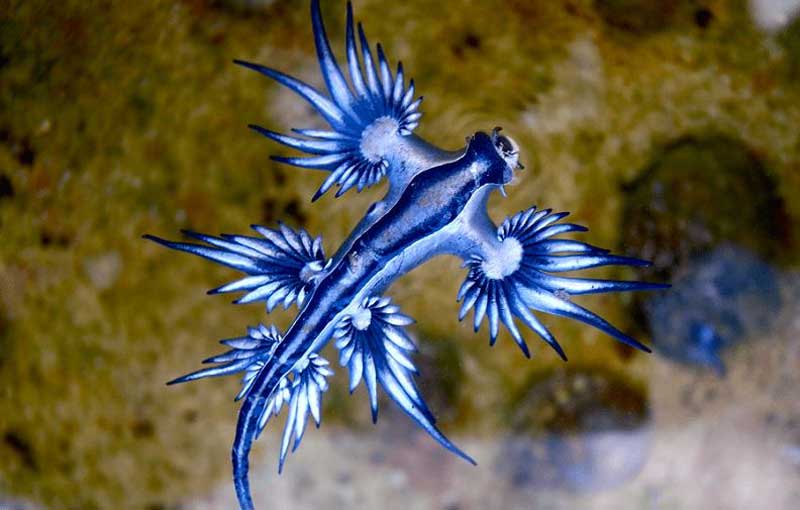One of the facts of the fact of the sea swallow is its name. The term Sea Swallow used for this animal is just a term of many other terms used for sea snails. So, this variation of the marine gastropod also has another name.
Among other names used to describe sea swallows are blue glaucus, blue angel, blue sea slug, blue dragon, and the blue ocean slug. While the scientific name is very difficult for us to pronounce, it is Glaucus atlanticus. Despite all that, the sea swallow is a very charming sea creature. It was recorded as a species for the first time in 1777, this was done by a German ethnologist namely Johann Georg Adam Forster.
Similar to the insect called the Picasso bug, the Sea Swallow is still able to maintain its species and is classified as a stable aquatic animal. So, the IUCN does not include it as a rare animal or heading for extinction. However, the sea swallow is a unique species, therefore it should still be considered as an animal at risk of extinction, could be the effect of future climate continuation and so on.
Sea Swallow Physical Description
This animal is so prominent from its appearance that it attracts a lot of attention among other aquatic animals. Perhaps two things cause the sea swallow to be unique. First: It gives a dazzling appearance to the world. Second: This nudibranch is the smallest of the average family members.
These invertebrate animals are very small and this surprises many people. Where adult animals have an average length of 1.2 inches or about 3 cm.
This beautiful animal does not show the physiological nature of sexual dimorphism. Adult sea swallows, both female and male, are both silvery gray on one side and pale blue on the other.
So, it’s hard to tell which one is male and which is female because visually they are the same.
However, there are some old lines that usually appear on the head, the body is flat and pointed, and develops with a finger-like structure.
- Kingdom: Animalia
- Phylum: Mollusca
- Class: Gastropod
- Order: Nudibranch
- Family: Glaucidae
- Genus: Glaucus
- Species: G. atlanticus
Sea Swallow Distribution, Habitat, and Ecology
Sea swallows are very lucky because they seem to inhabit a very wide natural range. This is because the amazing gastropods inhabit every ocean in the world.
However, the population concentration is uneven and it is likely that it is concentrated only in certain areas in some parts of the world. This is a fact of sea swallows because this nudibranchs appear on a large scale in three regions of the world.
See too: Fish with Human Teeth (Pacu)
The seas with the largest sea swallow habitats are the coastal regions of South Africa, Europe and eastern Australia. Meanwhile, smaller concentrations of distribution were also found in temperate and tropical waters.
Differences Sea Swallow with other Species
There are several aspects that distinguish the Sea Swallow from other species.
First: all members of this species develop hermaphrodites, meaning that they have two reproductive organs at once, namely male and female.
Second: This animal floats upside down on the surface of the sea, assisted by a pouch in its stomach filled with gas.
Third: Their prey consists of creatures larger than themselves.
The presence of these three traits alone is enough to distinguish them from other animals similar to them in their class.
See too: Pictures of All Animals on Earth
What do Sea Swallows eat?
These hermaphrodites usually eat creatures such as the velella, the Portuguese Man O War, and the Violet Snail.
His natural immunity allows him to eat even poisonous animals and he ends up storing the poison of his prey in his body and then this poison is used for himself.
